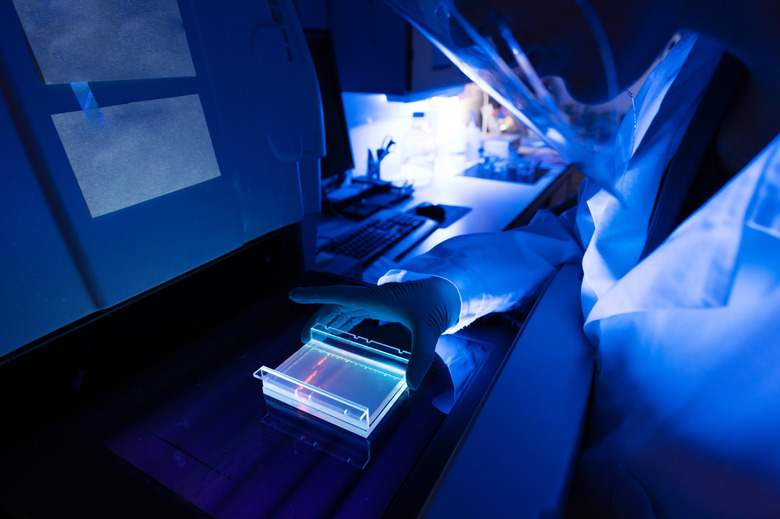Electrophoresis Process
Definition
Definition
Electrophoresis is the process of separating certain large molecules so they can be examined more easily. The word itself is derived from Greek, "electro" referring to the electrical current that adds energy to the electrons of the molecule's atoms and "phoresis," referring to the movement of the particles. Electrophoresis is used mostly with colloidal or macromolecule particles–large particles made of more than one simple molecule structure–such as proteins or complicated nucleic acids.
Process
Process
These molecules are separated via an electrical current that is usually sent through a gel. This gel, often silica based, is used to suspend the particles and hold the charge. Two electrodes are attached to the gel, and the current they produce is used to attract the molecules toward one part of the gel while repelling them from the other side. The gel provides a friction force that prevents all the molecules from moving through it at once, but the larger molecules can generally overcome the friction and separate anyway. The movement of the molecules through the gel creates a strata of different types of molecules.
Uses
Uses
There are a number of different factors at work in electrophoresis, and each one is important for defining the sort of molecules being examined. How fast they move, how strong the electrical current is, the precise qualities of the gel, the shape of the molecules, the size of the molecules, the temperature of the solution and other factors all tell scientists what kind of molecules they are looking at.
To hold the molecules in their positions, they are stained in different striations throughout the gels, which makes it look like a series of colored bands. This process is one of the most important steps in DNA analysis, allowing scientists to draw out DNA proteins and examine them closely to determine their specific characteristics.
References
Cite This Article
MLA
Lacoma, Tyler. "Electrophoresis Process" sciencing.com, https://www.sciencing.com/electrophoresis-process-5481819/. 1 October 2009.
APA
Lacoma, Tyler. (2009, October 1). Electrophoresis Process. sciencing.com. Retrieved from https://www.sciencing.com/electrophoresis-process-5481819/
Chicago
Lacoma, Tyler. Electrophoresis Process last modified March 24, 2022. https://www.sciencing.com/electrophoresis-process-5481819/
